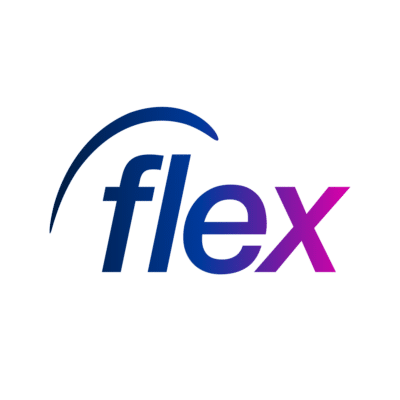
The administrative tasks associated with workforce management consume a significant portion of any HR professional’s time, often at the expense of strategic priorities and employee engagement. Workforce management software offers a practical solution by automating repetitive processes, reducing errors, and providing actionable insights that informed decision making. With the global workforce management software market valued at USD 8.8 billion in 2023 and expected to grow at over 8.5% CAGR from 2024 to 2032, it’s clear that organizations are increasingly recognizing the value of these tools in streamlining operations and improving business outcomes.
Understanding workforce management software: Beyond basic scheduling
Workforce management software extends far beyond simple scheduling tools, encompassing a wide range of functionalities designed to increase employee productivity, streamline operations, and enhance decision-making. While scheduling remains a key feature, modern solutions integrate advanced capabilities that address the complex needs of today’s businesses.
Key features of workforce management software
- Time and attendance tracking: Automates the process of recording employee working hours, ensuring accuracy and reducing the risk of payroll errors. Features like biometric systems and mobile clock-ins further enhance reliability.
- Absence and leave management: Simplifies the approval process for time-off requests, while providing managers with real-time visibility into team availability and coverage gaps.
- Task allocation and performance monitoring: Assigns tasks based on employee skills and tracks progress, enabling managers to identify bottlenecks and find ways round them.
- Compliance management: Ensures adherence to labor laws and regulations, reducing the risk of fines or legal disputes.
- Data-driven insights: Offers analytics tools that provide actionable insights into workforce trends, helping businesses make informed decisions.
The evolution of workforce management technology has also introduced cloud-based platforms and mobile-first designs, making these tools accessible to businesses of all sizes. For example, solutions supported by artificial intelligence (AI) can predict staffing needs, while mobile apps allow employees to manage their schedules on the go.
By adopting these tools, businesses can save significant time and resources, allowing HR teams to focus on strategic priorities rather than administrative tasks.
The hidden costs of manual administrative processes
Manual workforce management may appear cost-effective initially, but it often results in hidden expenses that can significantly impact an organization’s bottom line. These costs are not always immediately visible but accumulate over time, affecting budgeting, accuracy, and employee satisfaction.
Common costs associated with manual processes
- High error rates: Manual data entry is prone to mistakes, with error rates ranging from 1-8%. These errors can result in payroll discrepancies, compliance violations, and scheduling conflicts, each requiring additional time and resources to resolve.
- Time inefficiencies: Research from Deloitte indicates that organizations spend an average of £15-20 per timesheet when processed manually, compared to just £2-3 with automated systems.
- Missed opportunities for real-time decision-making: Manual data collection delays access to critical information, making it difficult for businesses to respond quickly to changing workforce demands.
- Employee dissatisfaction: Errors in payroll or scheduling can lead to frustration among staff, potentially increasing turnover rates and recruitment costs.
5 ways WFM software eliminates administrative burdens
Workforce management software addresses the issues that arise from using manual processes by automating repetitive tasks and providing actionable insights. Below are five key ways these tools reduce administrative workloads:
- Automated time tracking and attendance: Digital time capture methods, such as mobile apps and geofencing, eliminate the need for paper-based timesheets. This automation reduces payroll processing time by up to 49%, according to Aberdeen Group research.
- Intelligent scheduling: Advanced algorithms account for variables like employee availability, skills, and demand forecasts to create optimized schedules in minutes. These systems also identify qualified replacements for absent staff, minimizing disruptions.
- Streamlined leave management: Digital platforms enable employees to request time off through self-service portals, while managers can approve requests instantly. Automated policy enforcement ensures compliance with labor laws and company guidelines.
- Employee self-service: Empowering employees with tools to manage their schedules, update personal information, and access pay details reduces HR inquiries by up to 70%, as shown in Indeed Flex’s internal research.
- Real-time analytics: Preconfigured reports on labor costs, absence trends, and productivity metrics eliminate the need for manual data compilation. This allows managers to make data-driven decisions quickly and effectively.
By automating these processes, businesses not only reduce administrative burdens but also improve accuracy and employee satisfaction.
Integration capabilities: Creating a seamless administrative ecosystem
The effectiveness of workforce management software is amplified when it integrates seamlessly with other business systems. Modern platforms are designed to connect with payroll, HR information systems (HRIS), and financial tools, creating a unified administrative ecosystem.
Benefits of integration
- Elimination of redundant data entry: Information flows automatically between systems, reducing errors and saving time.
- Real-time updates: For example, approved time records can instantly sync with payroll systems, ensuring timely and accurate salary payments.
- Comprehensive data visibility: Integration with financial tools allows businesses to track labor costs in real-time, providing insights that inform budgeting and forecasting.
Compliance management: Reducing administrative risk
Compliance with labor laws and regulations is a complex and time-intensive responsibility for HR teams. Workforce management software simplifies this process by automating compliance checks and maintaining accurate records.
How WFM software supports compliance
- Rule enforcement: Built-in engines ensure schedules adhere to working time directives, break requirements, and overtime regulations.
- Certification tracking: The system monitors employee certifications and alerts managers when renewals are due, ensuring continued compliance.
- Audit trail documentation: Automated record-keeping provides a clear history of compliance activities, reducing the risk of penalties during audits.
Implementation best practices
To maximize the benefits of workforce management software, organizations must approach implementation strategically. A well-planned rollout ensures the system addresses key pain points and delivers tangible gains.
Steps for successful implementation
- Assess current processes: Identify problems areas and establish a baseline for improvement.
- Engage stakeholders: Involve HR, finance, IT, and frontline employees to ensure the system meets organizational needs.
- Adopt a phased rollout: Start with core functionalities, such as time tracking, before expanding to advanced features like analytics.
- Provide comprehensive training: Equip users with the knowledge to use the system effectively, encouraging adoption of new tech.
Indeed Flex recommends beginning with time and attendance automation to achieve quick wins, followed by more complex capabilities.
Take control of your workforce management
Indeed Flex empowers businesses to streamline workforce management by automating tasks, therefore reducing administrative burdens. Request a demo today to discover how our innovative platform can save you time and help your organization achieve its goals.








